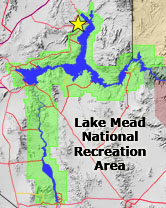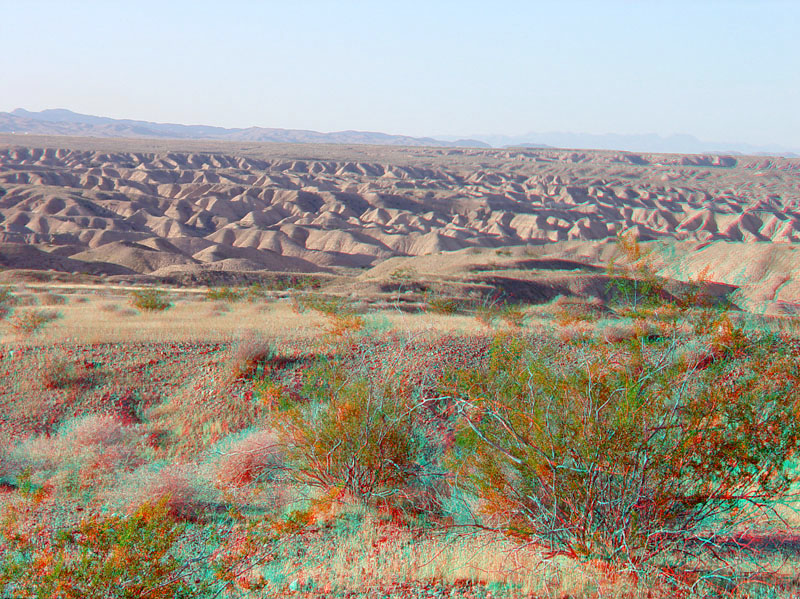 |
This view is looking west over badlands eroded in an old pediment surface near the intersection of the Overton Beach access road and the Northshore Road. The bedrock in the pediment consists of Muddy Creek Formation (soft, basin-fill sediments of late Miocene to Pliocene age). In places, the tops of the badlands are capped by Quaternary-age alluvial deposits that covered the pediment surface.
Pediments and alluvial fans are part of the erosional history of the region. An alluvial fan is an outspread, gently sloping mass of sediments deposited by a stream that issue from mountain canyon. Fans from multiple streams typically merge together to form an apron of sediments along mountain fronts (typically in arid regions). A pediment is a gently sloping erosional surface or plain of low relief on bedrock, and are typically developed by running water in arid or semiarid regions at the base of an abrupt and receding mountain front. Pediments may have a thin, intermittent veneer of sediment. Alluvial fans and pediments often occur side-by-side or merge along mountain ranges throughout the Desert Southwest (Easterbrook, 1999). |



